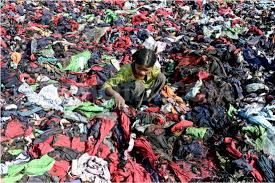
At what cost? a blog about the unintended consequences of continually driving cost savings Year on Year from your suppliers.
Lets start with a definitions to whet the appetite;
Cost savings also known as cost reductions or ‘hard’ cost savings, are savings that directly impact the company’s bottom line (i.e. profit/loss).
In relation to procurement ; The aim of Procurement savings are to drive down procurement costs, improve supplier terms and decrease product prices. A cost-effective procurement process would help a large organization generate millions of dollars of savings every year.
What do you think ? Do you agree?
There is a very fine line when continually requesting cost savings from your suppliers year on year, especially when only focused on the input price and not Value or Total Cost of Ownership. Suppliers have to make a return on investment for their shareholders. Continually squeezing margins can drive many unintended consequences.
I have a saying that is a different take on squeezing blood out of a stone. In the context of your suppliers “If you continue to squeeze a stone with your hand what happens to your hand ? – ( It will be your hand that bleeds)!”
The Construction Industry
A great example of unintended consequences of cost out in New Zealand is the systemic issues in our construction industry. An industry’s boom / bust cycle is constantly under review. (NZ demographics for the construction industry show 90% of organisations have less than 10 employees – atypical compared to many OECD countries). For many years there has been a focus on fixed price construction at lowest cost combined with the drive to transfer as much risk as possible to the supplier. The articles below highlight the issues the big companies (10% of the industry) have had over the last few years entering liquidation or writing off millions of dollars;
https://www.nzherald.co.nz/business/news/article.cfm?c_id=3&objectid=11994098
In boom time liquidation should be unheard of. This is one of the unintended consequences around costs and fixed prices!
“Sometimes it costs you more to do something that it is actually worth”
Do you have any examples of when this has occurred?
Global Fashion
Consumer demand can also driver unintended consequences and at what cost? The Global Fashion Industry was worth $2.4 trillion in 2018 with an expected growth of 5-6% Year on Year.
Consumer demand has driven a substantial growth in the fast fashion industry for cheap throw away fashion.
Andrew Morgan’s documentary The True Cost on Netflix is about the clothes we wear, the people who make them, and the impact the industry is having on our world. The price of clothing has been decreasing for decades, while the human and environmental costs have grown dramatically. Filmed all over the world, the documentary spans the brightest runways to the darkest slums, and features interviews with the world’s leading influencers including Stella McCartney, Livia Firth and Vandana Shiva, The True Cost is an unprecedented project that invites us on an eye opening journey around the world and into the lives of the many people and places behind our clothes.
From <https://truecostmovie.com/about/>
The consumer driven consumption for low cost fashion items and the link to sweat shops and industrialisation of resources creates unsustainable issues on our natural resources. Also forms of modern slavery through inhumane working conditions begs the question who really pays the price for our clothing?
Modern Slavery
Modern slavery is a critical issue derived by the demand to continually cut manufacturing costs at the expense of human rights – ( humane working conditions, a fair days pay for a fair days work )
Based on a recent CIPS modern slavery workshop I co-hosted in Australia, here are some of the global modern slavery statistics taken from the globalslaveryindex.org;
- 40.3 million people in modern slavery world-wide (71% are female)
- 24.9 million in forced labor
- 65% of modern slavery is concentrated in the Asia Pacific region
- G20 countries leaders in consumption: $354 billion of at-risk products imported by G20 countries on a yearly basis
- Government response
- Most at-risk imported products: electronic devices $200B, garments $128B, fishing $13B, cocoa $3.6B, sugarcane $2B
Who would have thought that in the G20 counties the average person employs 40 slaves!
The Australian statistics are also quite challenging, however in response Federal Government Legislation was introduced in January 2019 ( only the second country in the world to implement modern slavery legislation). The philanthropist Andrew Forest and his wife set up Walk Free Foundation with a vision for a world free of modern slavery and human trafficking. https://www.freedomunited.org/about-us/
Australia’s Modern Slavery statistics;
- 15,000 people in modern slavery in Australia
- Forced labor is the most common form of slavery
- Over $12B imported at-risk products every year
- Number one on most active countries for response to modern slavery in the Asia Pacific region (before Act was introduced)
- Most at-risk imported products: electronic devices $7.1B, garments $4.6B, fishing $180M, rice$40M, cocoa $23M
- Most at-risk industries: service (cleaning & security), agriculture, fishing
Summary
Controlling costs is key to managing sustainable businesses, however driving an environment that continually puts pressures on suppliers has many negative unintended consequences. Global consumer demand and low cost not only creates irreparable environmental issues, it also builds an environment that ignores basic human rights.
A new focus on Sustainability, Value, Quality, Risk and the Total Social Cost of Ownership (TSCO) should be something that all organisations should aspire to. Procurement is one of the enablers of this focus as 40-70% of business’s expenditure is through third party suppliers.
It is time for procurement to help lead a change by doing the right thing!
Are you on board? Drive that change!
What is the cost of not?
The only way forward is to create new communication systems. The solution is not the zero sum game that governments are adopting.
LikeLike